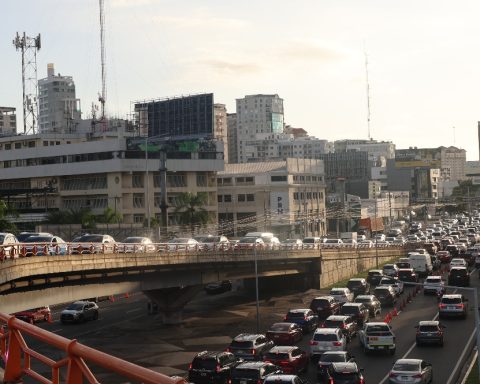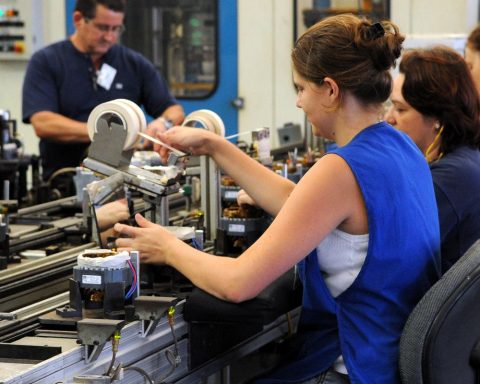The formal employees of the local manufacturing were located in the period January-April 2022 in 137,397, for an interannual variation of -0.35%. The recovery is around 95.6% compared to March 2020.
The data is contained in the “Local manufacturing situation monitoring report” published by the Ministry of Industry, Commerce and Mipymes (MICM), through the vice-ministry of industrial development, where it is also indicated that for the month of April 2022, the balance of the credit portfolio of the industries manufacturers in national currency is 63,260.0 million pesosfor 12.4 percent higher than the same month of 2021, and in foreign currency it is 18,020.9 million pesosfor 57.6 percent higher than the same month of 2021.
Main sectors with recovery greater than 100 percent of formal jobs
1) Manufacture of Pharmaceutical Products 110 percent
2) Manufacture of Soaps and Detergents 115 percent
3) Manufacture of Plastic 108 percent
4) Production of Oils and Fats of Vegetable and Animal Origin 106 percent
5) Manufacture of Chemical Substances 103 percent
6) Manufacture of Milling Products 104 percent
7) Manufacture of Refined Petroleum Products 113 percent
8) Production of Dairy Products 101 percent
9) industries Basic Iron and Steel 101 percent
Main subsectors with recovery less than 100 percent
1) Editing, Recording, Printing 78 percent
2) Manufacture of beverages 89 percent
3) Manufacture of Furniture and Mattresses 85 percent
4) Manufacture of Bakery Products 88 percent
5) Manufacture of Textile Products and Garments 82 percent
6) Sugar Processing 97 percent
7) Manufacture of Ceramic Products 68 percent
8) Meat Conservation, Production and Processing 98 percent
Internal collections from local manufacturing
According to the report of Vice Ministry of Industrial Developmentthe accumulated collections January-April 2022 of local manufacturing amounts to 53,122 million pesos, registering an accumulated interannual growth of 6.1 percent.
Internal collections according to the main manufacturing subsectors indicate that the production of beverages contributed 18,461 million pesos, for a growth of 5.8 percent in the first quarter of 2022, when compared to the same period in 2021, when collections reached 17,445 million. pesos, an absolute variation of 1,016 million pesos in collections.
The second subsector that contributed the most through collections was petroleum refining products with 15,180 million pesos, for a growth of 6.2 percent compared to the same period in 2021. There is also the manufacture of cement, lime and gypsum with collections amounting to 2,748 million pesos, below 2021, a period that contributed 3,178 million pesos. During the first quarter of 2022, this sector presented a decrease of -13.5 percent.
At the collection level, the subsectors follow: industries basic iron and steel; pharmaceutical manufacturing; plastic processing; chemical manufacturing; manufacture of soaps and detergents, among others.
National industrial exports
The Monitoring Report on the Situation of the Local Manufacturing indicates that accumulated national industrial exports amount to 638 million dollars, registering an interannual growth of 30.9 percent.
According to official data, national industrial exports had Haiti as their main destination after reaching 209.3 million dollars, for a share of 32.8 percent. The United States follows with 154.9 million dollars

Follow-up Report on the Situation of Local Manufacturing
The Vice Minister of Industrial Development of the MICM, Fantino Polanco, explained to Diario Libre that “The Follow-up Report on the Situation of the Local Manufacturing” allows to know the performance of the manufacturing activity in the Dominican Republic.
He said that said report concisely presents the results month by month of the main economic variables, specifically sales, value added, employment, collections, exports, prices, credit and industrial perception.
“This report is important because it allows public policy makers, technicians, industrialists, investors and the general public to stay informed about the economic performance of the aforementioned sector. By means of graphs and tables, it allows the reader to know both the behavior of the variables for the current year and to compare with the same month of the previous year”, Polanco pointed out.


















